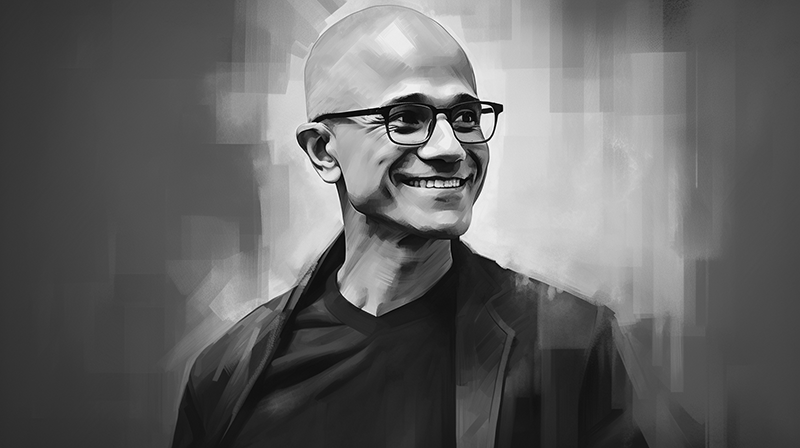Being a leader who can navigate and influence change is crucial for success in the fast-paced, ever-changing business world. Satya Nadella, CEO of Microsoft, is recognized for his transformative leadership. In his book “Hit Refresh,” Nadella shares insights to inspire and guide leaders across industries. I will summarize themes and key points from the book and discuss their application in real-life scenarios in this blog post. These are my personal takeaways that resonate throughout my career.
- Empathy as a Leadership Cornerstone: Nadella underscores empathy’s critical role in leadership by genuinely understanding and relating to team members’ needs and viewpoints. Leaders can foster a workplace brimming with trust, open communication, and collaboration by doing so. This approach not only enhances the working environment but also sparks innovation and productivity. Empathy is not about trying to feel sorry and always agreeing with others, but understanding their point of view and making decisions on what is the best option given all considerations.
- Growth Mindset and Continuous Improvement: The concept of a growth mindset is pivotal in Nadella’s leadership philosophy. He advocates for leaders to embrace challenges, learn from failures, and continually seek improvement. This mindset inspires teams to adapt to change and pursue innovation, keeping them agile and forward thinking. The most famous mantra from his book is changing Microsoft culture from “know-it-all” to “learn-it-all”. At Kuncie, we develop this culture of “make things happen, make it better” to embrace rapid experimentation and growth cycle.
- Vision, Diversity, and Innovation: Creating a compelling vision and purpose is essential in today’s dynamic business landscape. Nadella stresses the importance of aligning team goals with a broader mission to motivate and create a sense of belonging. He also highlights the significance of cultivating a diverse and inclusive culture, recognizing that varied perspectives and backgrounds are key drivers of creativity and innovation. Uniformity creates an echo chamber that can reduce innovation. The takeaways that I learn from this are to always create space for discussion, debates, and idea meritocracy where the best executable ideas that align with vision win.
- Customer-Centric Approach and Trust-Based Relationships: Nadella emphasizes the importance of focusing on customer needs and building trust-based relationships. By prioritizing customer-centricity and consistently delivering beyond expectations, leaders can foster loyalty and ensure long-term organizational success. Similarly, building trust within teams is fundamental, promoting a supportive and collaborative environment. Customerscan be multifaceted, not only end customers but also internal across teams, hence by always delivering excellence to customers (another Kuncie culture), businesses will be built based on trust with all related stakeholders.
- Adapting to Digital Transformation and Leading with Authenticity: Nadella encourages leaders to embrace technology and spearhead digital transformation within their organizations in an era dominated by digital advancements. This approach is crucial for staying competitive and innovative. Moreover, he advises leaders to lead with authenticity and humility, advocating for transparency and a culture that values continuous growth.
I reflect on the principles that Satya shares in “Hit Refresh”, and I’m struck by their alignment with my leadership experiences. Throughout my journey, these lessons have not just been relevant, but pivotal.
Leadership is a continuous process of growth and self-discovery. It’s about being at the forefront, not just in terms of business strategy, but in understanding your team’s human element. It’s about seeing beyond spreadsheets and project plans to the aspirations and potential of the people who make everything possible.
Empathy’s transformative power has profoundly affected me. It involves genuine interest in others’ perspectives and well-being, going beyond understanding. This approach has strengthened my connections with my team and stakeholders, fostering a more unified and motivated workforce.
Leading a team, especially through uncertain times, has tested my resilience and adaptability. The journey hasn’t been without challenges. There have been setbacks, but each has been a learning experience. These challenges have taught me that true leadership is about persisting, even when the destination seems unclear.
Nadella’s book lessons are not only professional principles; they are guideposts for personal and organizational growth. These insights inspire and prompt reflection as I lead and learn, reminding me that leadership’s essence is the impact on people and the legacy we leave.
